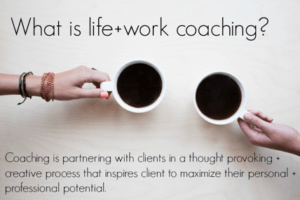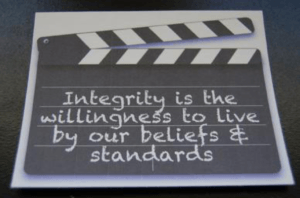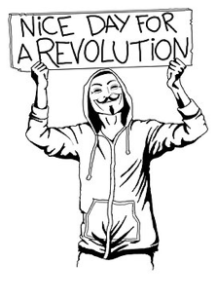People Building
“When a man is singing and cannot lift his voice, and another comes and sings with him, another who can lift his voice, the first will be able to lift his voice too. That is the secret of the bond between spirits”
—Martin Buber

Coaching is a process of changing awareness and, in turn, behavior. The “sine qua non” of the creative process is simple change: The transformations of one form to another, of a symbol into an insight, a change to a new set of behaviors, the change of a dream into dramatic change. So, creativity and coaching are interconnected at a basic level:
Transformation, Metamorphosis, Change
The “creative process” in coaching isn’t something that they taught us about in school. A little about process, a great deal of practice, and the rest was left up to luck and what you, as the coach, wanted to learn. Some people focused on leadership, others on career coaching, and yet others like me focused on people. This is not to say that the other coaches don’t value and help people, but the people are part of the process, they aren’t the process.

The following perspectives I learned from the various therapists that have supervised and guided my work for the past few years. It is a result of the shared richness of the experience as well as the technical know-how of the mentors, where I learned to give the threads of each experience the opportunity to develop and in the end, complete themselves. Creative coaching, I learned, is an encounter, a growth process, a problem-solving event, a special form of learning. It is an exploration of the full range of the client’s range of aspiration and ultimate ascendance.
Integrity
When your work is with the people and not the process, you discover that creativity plays a larger role. The creative process in coaching has, at its core, two elements. The first is the coach’s relationship to the client’s existing “integrity.” Everyone enters coaching with a unique personal integrity. We all have it…all of us. This means that over the years, the client has developed ways of being in a world that has both structural and functional unity for them. It is how they live and feel daily and for the most part, it works for them. This unity also includes the complaints and behaviors which, in the coach’s or client’s view, hamper the client’s ability to make the changes they desire.

This whole bundle—this mass of feelings, physical stances, and verbal styles—make up the person’s integrity. Most people come to coaching not so much to change this sense of being themselves, but rather to exercise it. To be their best self.
Interacting with this integrity involves using the coach’s whole being in a study of “what it’s like to be a person like this,” to “bend one’s shoulders,” to “tighten one’s back” or to feel this or that, to get into the client’s way of being in the world. This is a kind of loving curiosity, a lively and naturalistic learning of the other person’s life space.
Revolutionary Molding
The second part of the creative coaching process that I learned along the way is “revolutionary molding.” Here, the coach identifies with the most radical aspects of the client’s personality, that part of them that is waiting for permission to experiment with novel or truly amazing ways of experiencing himself.

The client is constantly experiencing the life challenge of being torn between the painful comfort of their existing integrity and their need to change. Generally, the creative process is slowed down when the coach and the client accidentally identify with separate parts of the client’s personality.
Basically, the coach’s questions beg for change and the client fights for his “integrity.” In this collusion, the “revolutionary” in the client is projected onto the coach, and the client can conveniently “fight” with his or her own projection. Do you get it?
Roles and Perceptions
The client’s view of the coach varies with their stage of development as a person as well as their specific life circumstances. I have had clients bring ghosts of their past in for a visit. I can be seen as a critical or loving parent, a villain, a teaser, a wise older man, a religious figure in their life, a potential suitor, and on it goes. What Freud pointed out about psychotherapy applies equally well to creative coaching; it is, in some ways, a working out of the patient’s perception of the coach. At the most advanced levels, we both take turns grand-parenting, each using his individual experiences to enhance the life of the other person.

In the creative process, the coach invites and enables the client to join him in an adventure in which the pair can play parts in this drama. The coach helps the client become the experimenter while maintaining an attitude of understanding and respect for the client’s existing stance. It is in this process of rhythmic sharing, the active exploration of the client’s inner life, that the client begins to change.
The creative process gels with one’s appreciation of what is there, the essence, the clarity, and the impact of what is around us. You look at the person like you would look at a sunset or a lake. You take in what you see with pleasure. You take in the person for his or her own sake. You would do just the same with the sunset, right? Like nature, the person just is.
Understanding the Client
Every coaching situation is a search for, and partial resolution of, a problem in the largest sense of the word. The goal of the coach, the coach’s “problem” is to build an adequate understanding, a sort of cognitive map, that includes the client’s experience of him or herself and then ask questions that allow the client to see the array of options before him. Done correctly, the client sees clearly the best possible solution and follows it to the appropriate outcome for him. Just like a good guide, the coach has to know the lay of the land so the path will take the person where they want to go and when they want to get there.
Patiently Listening
It takes discipline—and joyful curiosity—on the part of the coach to stay with another person’s process. There is always a temptation to prematurely offer solutions with half-formed statements of clarification or explanation. This comes, at least for me, from my desire or anxiety about my role as helper or sage. That being said, they don’t come from respect for the individual nature of the client as a unique individual moving through life on a valid pathway. When I can be that disciplined, I realize that I can lean into this sort of aesthetic appreciation and become a lover of human nature.

Keeping a process like this going doesn’t deprive anyone. I am always there, prodding, questioning, enjoying, laughing, and flowing in a sense of wonderment and fascination. This perspective gives me the freedom to be a “leaner’ and to play with the ideas, rather than becoming fixed in stale old truths and that all too common routine of self-righteousness.
People Making
The late Virginia Satir called therapy “people making.” People making is, at its core, creative…or maybe creation. It can be at times discouraging, jarring, boring, abrasive, inspiring, humiliating, or just plain old stubborn. The coach works to see his client in his completeness. Coaching is permission to be exuberant, to have gladness, to play with the nicest possible futures that the client can imagine for themselves which is completely supported. No one gets depleted; instead, the client is nourished. For me, it stands for all that is in front of me, for all that promises completeness and experiencing, for things to come.
For me it means the full embrace of life, the enjoyment of all the subtle tastes. What can be better than that?

I Am Me
I am me
In all the world, there is no one else exactly like me
Everything that comes out of me is authentically me
Because I alone chose it – I own everything about me
My body, my feelings, my mouth, my voice, all my actions
Whether they be to others or to myself – I own my fantasies,
My dreams, my hopes, my fears – I own all my triumphs and
Successes, all my failures and mistakes. Because I own all of
Me, I can become intimately acquainted with me – by so doing
I can love me and be friendly with me in all my parts – I know
There are aspects about myself that puzzle me, and other
Aspects that I do not know – but as long as I am
Friendly and loving to myself, I can courageously
And hopefully look for solutions to the puzzles
And for ways to find out more about me. However I
Look and sound, whatever I say and do, and whatever
I think and feel at a given moment in time is authentically
Me. If later some parts of how I looked, sounded, thought
And felt turn out to be unfitting, I can discard that which is
Unfitting, keep the rest, and invent something new for that
Which I discarded – I can see, hear, feel, think, say, and do
I have the tools to survive, to be close to others, to be
Productive to make sense and order out of the world of
People and things outside of me – I own me, and
therefore I can engineer me – I am me and…
I AM OKAY
—Virginia Satir
CLICK HERE TO SCHEDULE YOUR CALL
Did You Enjoy This? Become a Subscriber and Learn More
As an independent coach and writer, I manage my own marketing, my own press, and all of my own content.
By becoming a member of my site, you can gain access to articles, audio versions, and commentaries relevant to my articles, interactive online courses, and with quite a bit more to come, I hope to hold your interest for quite a long time.


